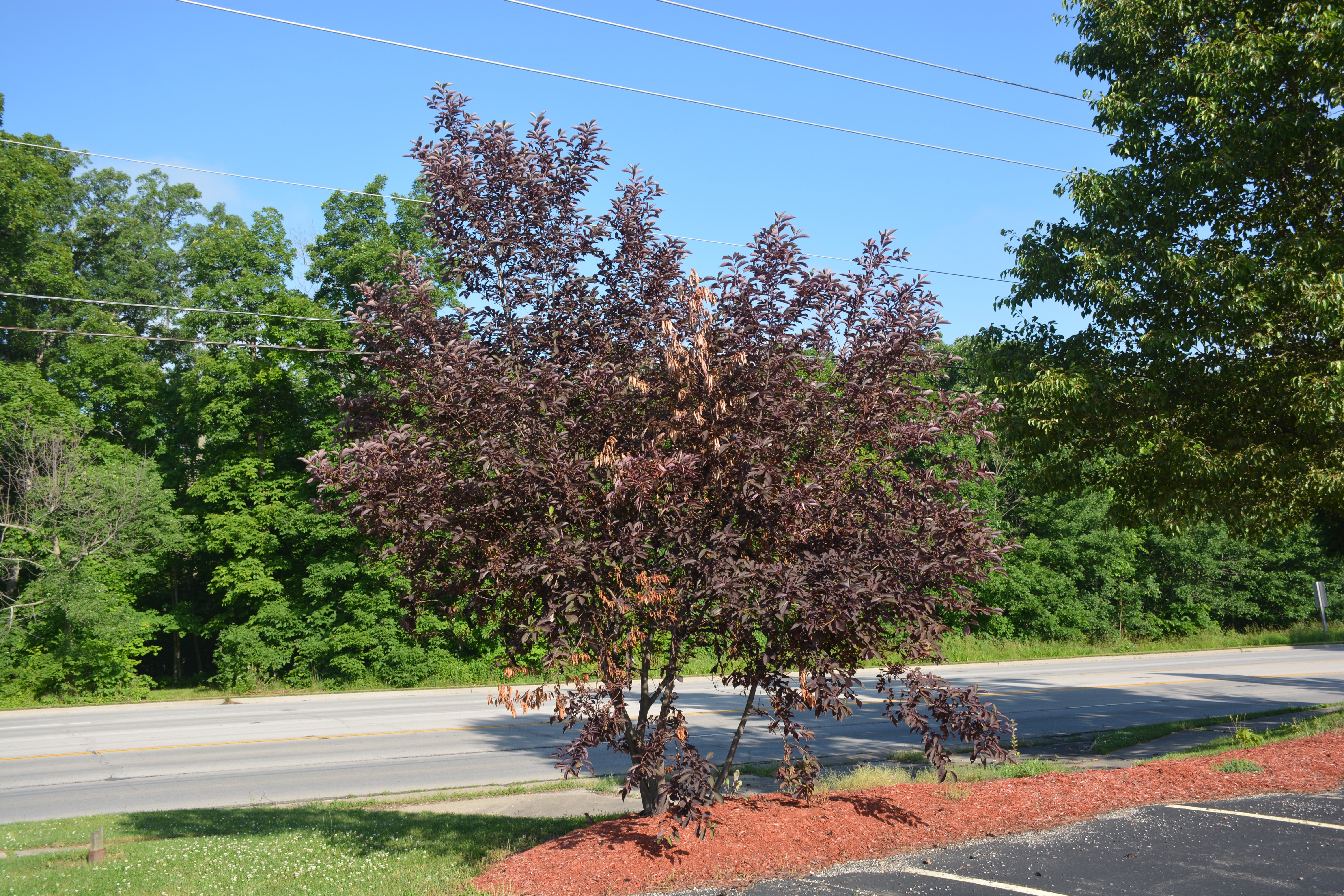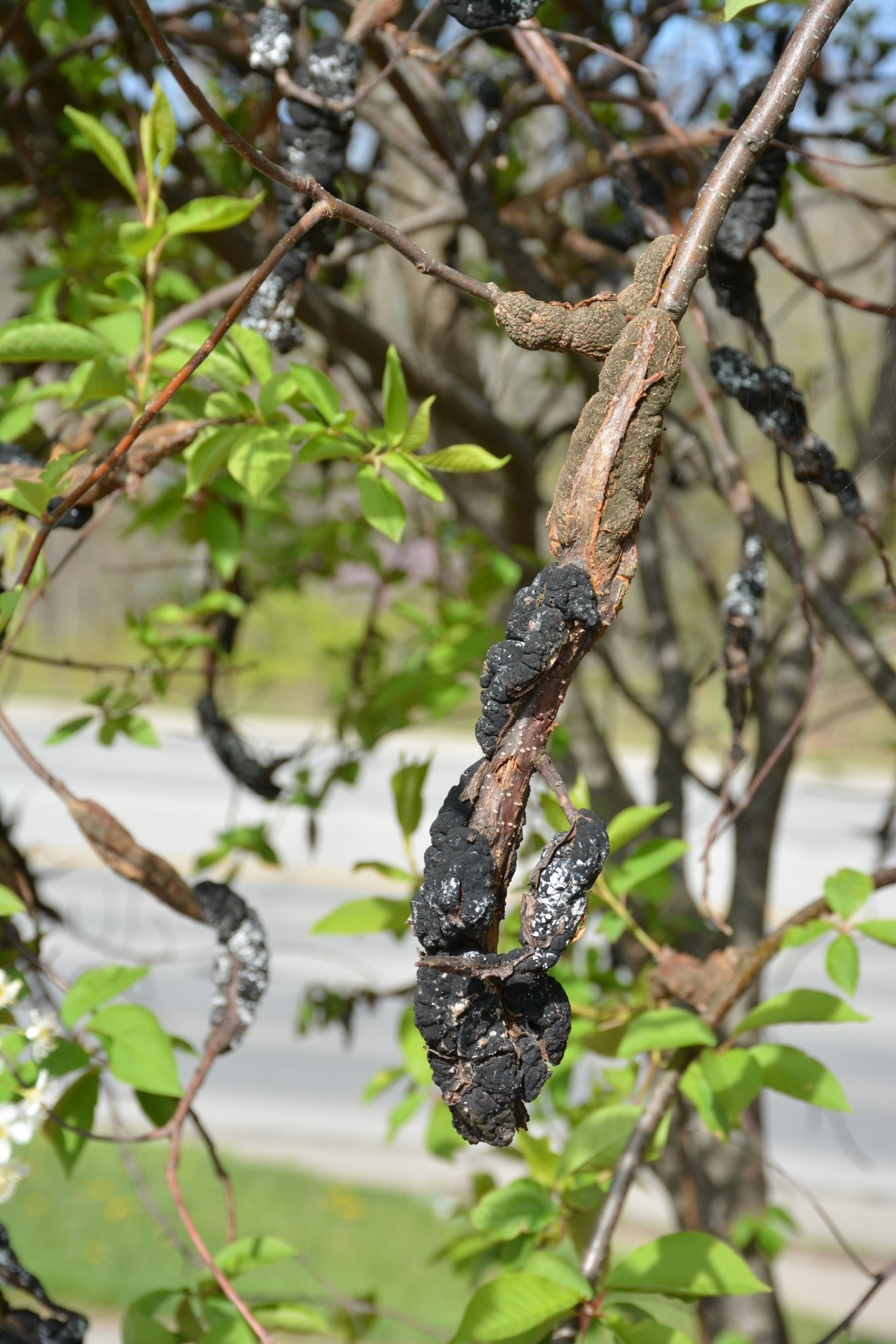Issue 5, June 17, 2021
Black Knot
Purple-leaved plants are a great way to add color to a landscape. For plants like purple common smoketree, purple European beech, and prairifire crabapple, the purple color is most intense on the newly emerged leaves before changing to a purple-green or dark green for the summer. Schubert chokecherry does the opposite, with leaves that emerge green and turn to a rich reddish-purple for the remainder of the season. As attractive as that sounds, this plant is a fairly short-lived species that is highly susceptible to black knot.

Schubert chokecherry
Black knot is a common fungal disease that affects at least 25 Prunus species, both edible and ornamental. The disease is caused by the fungus Apiosporina morbosa (sny. Dibotryon morbosum). This pathogen infects new twigs, branches, and fruit spurs during the spring. Trunks also can become diseased. Most infections occur between bud break and two weeks after bloom when wet conditions are accompanied by temperatures of 55° to 77°F.
Early symptoms of the disease are easily overlooked, appearing in autumn as swellings of the current year’s growth. Infected branches continue to swell during the following spring, eventually causing the bark to rupture, revealing corky, olive-green fungal tissue. By the fall, affected tissues are hard, brittle, rough, and darken to a characteristic coal black color. Affected branches often fail to leaf out the following spring or wilt and die by early summer. The infected branches that remain living have black knots that elongate on a perennial basis. Some knots can develop to be one foot or longer. The disease becomes more severe with each growing season. Black knot will not typically kill the tree, but causes deformed growth if left unchecked.

Black knot on Schubert chokecherry
Disease Management Options:
- Purchase disease-free plants. Carefully inspect the plants before purchase. Avoid plants with visible knots or abnormal swelling on branches and twigs.
- Pruning and sanitation are the primary means for reducing or eliminating black knot. During the dormant season (late winter or early spring), prune out infected branches. Make cuts 4 to 8 inches below any obvious infected tissue. Destroy (burn) or bury affected branches
- Remove and destroy any nearby unwanted Prunus species that may be harboring the pathogen. Wild plums and cherries are more susceptible to black knot than cultivated varieties. If your landscaped area is near a wooded site, look for galls on the wild Prunus species. Infected wild trees should be removed.
- Fungicide applications may be used in conjunction with cultural practices, but are often not warranted. Fungicide sprays should be applied as soon as buds open and must be continued every 2 weeks until about 3 weeks after petals fall. Chlorthalonil (Daconil), Copper hydroxide (Kocide), and Copper hydroxide + Mancozeb (Junction) are registered for use on black knot of ornamentals. Copper Octanoate (Bonide Liquid Copper Fungicide) is labeled for homeowner use. Carefully read the product label to ensure that it has been approved for the host and disease.
Author:
Travis Cleveland